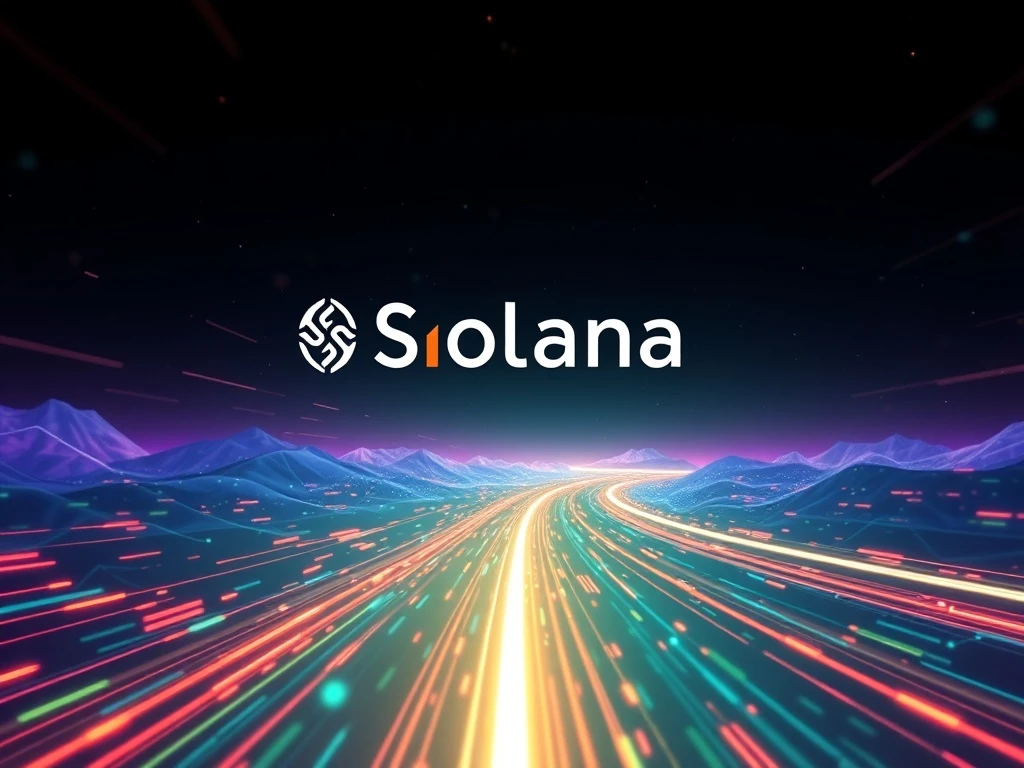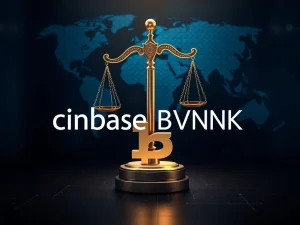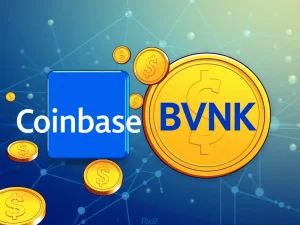Solana Alpenglow: **Revolutionary** 150ms Finality Upgrade Poised for Approval

The cryptocurrency world often buzzes with news of technological advancements. Recently, a significant development for the Solana ecosystem has captured widespread attention. The **Solana Alpenglow** upgrade, a pivotal proposal, is on the verge of passing. This update promises to dramatically reduce transaction finality to an astonishing 150 milliseconds. This speed rivals traditional internet infrastructure, marking a potential game-changer for the blockchain.
Understanding Solana Alpenglow and its Impact on Transaction Finality
Solana, known for its high throughput, stands at a crucial juncture. Its community has overwhelmingly backed the Alpenglow consensus protocol. Over 99% of votes cast favor this groundbreaking proposal. This indicates strong support for enhancing Solana’s core capabilities. The upgrade aims to align Solana’s transaction finality with speeds comparable to a Google search result. This is a monumental leap from its current 12.8-second finality. Such an improvement means transactions will confirm almost instantaneously.
Anza, a Solana development firm, unveiled the Alpenglow protocol in May. Many ecosystem members describe it as the most significant protocol upgrade in Solana’s history. The proposed 150-millisecond finality represents a nearly 100-fold speed increase. This positions Solana to compete directly with existing Web2 infrastructure. Consequently, it opens doors for entirely new categories of decentralized applications (dApps) requiring real-time performance.
The governance process for Alpenglow began on August 21. Data from Staking Facilities shows overwhelming support. Over 99.6% of votes cast have supported the proposal. The voting period is nearing its end, expected to conclude on Tuesday at 1 pm UTC. Furthermore, the necessary 33% quorum threshold has been met. This makes Alpenglow’s passage almost certain, provided current voting trends continue. This outcome will solidify Solana’s position as a leading layer-1 blockchain.
The Competitive Edge: Solana’s Blockchain Speed Redefinition
A successful implementation of Alpenglow will significantly bolster Solana’s reputation. It will reinforce its status as one of the fastest layer-1 blockchains available. Consider the competition: Sui, another fast blockchain, offers transaction finality around 400 milliseconds. Alpenglow would make Solana more than twice as fast. This level of **blockchain speed** could even surpass standard Google searches, which typically return results in approximately 200 milliseconds. This comparison highlights the unprecedented responsiveness Solana aims to achieve.
Transaction speed remains a critical differentiator for layer-1 blockchains. They constantly vie for market share against giants like Bitcoin and Ethereum. Ethereum, for instance, includes transactions in about 12 or 13 seconds. However, it does not reach finality until roughly 12 minutes later. This stark contrast underscores Alpenglow’s potential. It offers a clear advantage in applications demanding rapid confirmations. Therefore, Solana could attract developers and users seeking unparalleled performance.
Anza researchers Quentin Kniep, Kobi Sliwinski, and Roger Wattenhofer elaborated on Alpenglow’s broader implications in May. They noted that 150 milliseconds of median latency is not merely about speed. It signifies Solana’s ability to rival Web2 infrastructure responsiveness. This could make blockchain technology viable for applications previously thought impossible on a decentralized network. Imagine real-time trading, high-frequency gaming, or instant payments. The possibilities expand dramatically with this level of performance.
Key Components of the Solana Upgrade: Votor and Rotor
The **Solana upgrade** is not a single feature; it comprises two crucial components. These are Votor and Rotor. Each plays a distinct role in achieving the desired transaction finality.
First, **Votor** will handle voting transactions and block finalization logic. Its design aims to finalize blocks in a single round. This occurs if 80% of the stake actively participates. If only 60% of the stake is responsive, it will finalize blocks in two rounds. Votor will effectively replace the existing TowerBFT consensus mechanism. This new approach streamlines the finalization process, making it more efficient and robust.
Second, **Rotor** is a data dissemination protocol. It replaces Solana’s current proof-of-history timestamping system. Rotor’s primary goal is to reduce the time required for all network nodes to agree on the network state. Anza described Rotor as a single layer of relayers. This structure replaces Turbine’s multi-hop system. It promises to deliver blocks faster and more uniformly across the network. This ensures all participants receive and process information quickly, enhancing overall network synchronization.
Here’s a quick overview of Rotor’s benefits:
- **Faster Block Propagation:** Delivers blocks more swiftly.
- **Uniform Distribution:** Ensures consistent block delivery to all nodes.
- **Simplified Architecture:** Replaces complex multi-hop systems with a single-layer relay.
Addressing Challenges and Future Outlook for the Anza Protocol
While the **Anza protocol** brings significant improvements, it is important to address its limitations. The project’s white paper acknowledges that Alpenglow will not completely eliminate Solana’s historical network outages. These outages have been a persistent challenge for the network. The primary reason for past disruptions is Solana’s reliance on a single production-ready client, Agave. Any security vulnerability in Agave can potentially disrupt the entire network.
However, a solution is on the horizon. Firedancer, a new independent validator client, is scheduled to launch on Solana’s mainnet later this year. Firedancer will provide much-needed client diversification for the network. This diversification is crucial for enhancing network resilience and stability. With multiple clients, a bug in one client will not bring down the entire blockchain. This move demonstrates Solana’s commitment to long-term reliability and robustness.
The Alpenglow upgrade signifies a bold step forward for Solana. It highlights the continuous innovation within the blockchain space. By pushing the boundaries of transaction finality, Solana aims to unlock new possibilities for decentralized applications. This could attract more developers and users, further expanding its ecosystem. The future of high-performance blockchain technology looks increasingly bright with advancements like Alpenglow leading the way.
This commitment to continuous improvement, combined with the upcoming client diversification, paints a promising picture for Solana’s future. The community’s overwhelming support for Alpenglow reflects a shared vision for a faster, more responsive, and ultimately more versatile blockchain platform.







